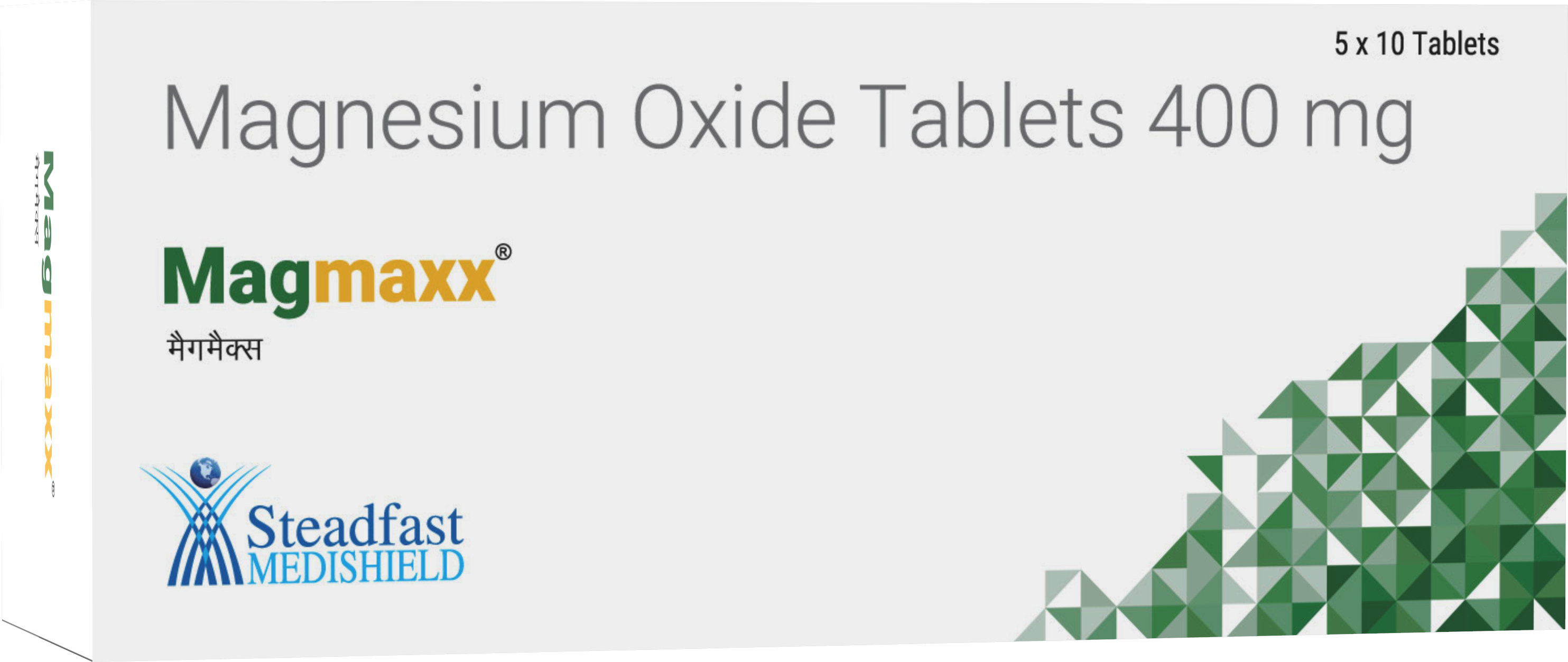
Description:
It has an empirical formula of MgO and consists of a lattice of Mg2+ ions and O2− ions held together by ionic bonding.Magnesium (Mg) is the fourth most abundant cation in the body and the second most important intracellular cation.
In recent years, Mg has gained much importance with the growing awareness that Mg is required as a cofactor in multiple enzymatic reactions and that it plays an important role in neuromuscular processes . Mg also has a role in mineral bone metabolism, adenosine triphos- phate metabolism, neurotransmitter release and in the regulation of vascular tone, heart rhythm and platelet- activated thrombosis .
In patients with chronic kidney disease (CKD) and end-stage renal disease (ESRD), changes in Mg homeo- stasis may occur. An understanding of the physiology in Mg handling is therefore of relevance for those taking care of patients with CKD and ESRD.
Composition:
Each film coated tablet contains light Magnesium Oxide 400mg which is equivalent to elemental magnesium 241.2mg or 19.6 mEq.
Indication:
Magmaxx is indicated in the management of Hypomagnesemia associated with Acute kidney injury, NODAT/ PTDM, Post Renal Transplant & Tacrolimus use.
Hypomagnesemia is usually defined as serum Magnesium,<0.7 mmol/L, <1.4 mEq/L, or <1.7 mg/dl.
Treatment with magnesium salts is indicated when magnesium deficiency is symptomatic or the magnesium concentration is persistently < 1.25 mg/dL (< 0.50 mmol/L).
Dosage & Administration:
Oral 1 to 2 tabs daily of Magmaxx can be taken until serum magnesium concentration reaches 2.5-3.0 mg/dL.
Treatment is indicated when Magnesium concentration is <1.25mg/l (<0.50mmol/l).
Warnings:
This medication contains magnesium oxide. Do not take Magmaxx if allergic to magnesium oxide or any ingredients contained in this drug.
Keep out of reach of children. In case of overdose, get medical help immediately.
Precautions:
Pregnancy and Lactation
Use of Magnesium oxide during pregnancy is generally acceptable.Controlled studies in pregnant women show no evidence of foetal risk.350-400 mg/ day elemental magnesium is recommended during pregnancy.
Magnesium oxide is distributed in breast milk; 310-360 mg/day elemental magnesium is recommended during breastfeeding.
Contraindications:
Patients with renal impairment (creatinine clearance of less than 30 mL per minute [0.5 mL per second]) may be at risk of heart block or hypermagnesemia
Adverse Reactions:
Oral supplementation generally is safe and well-tolerated; some reports of nausea, vomiting, diarrhoea; overdose may lead to hypotension & muscle weakness.
Storage:
Keep in a dry place at a temperature not exceeding 30°C. Protected from light.
Presentation:
10 tablets packed in a blister, 5 such blister packed in a carton
